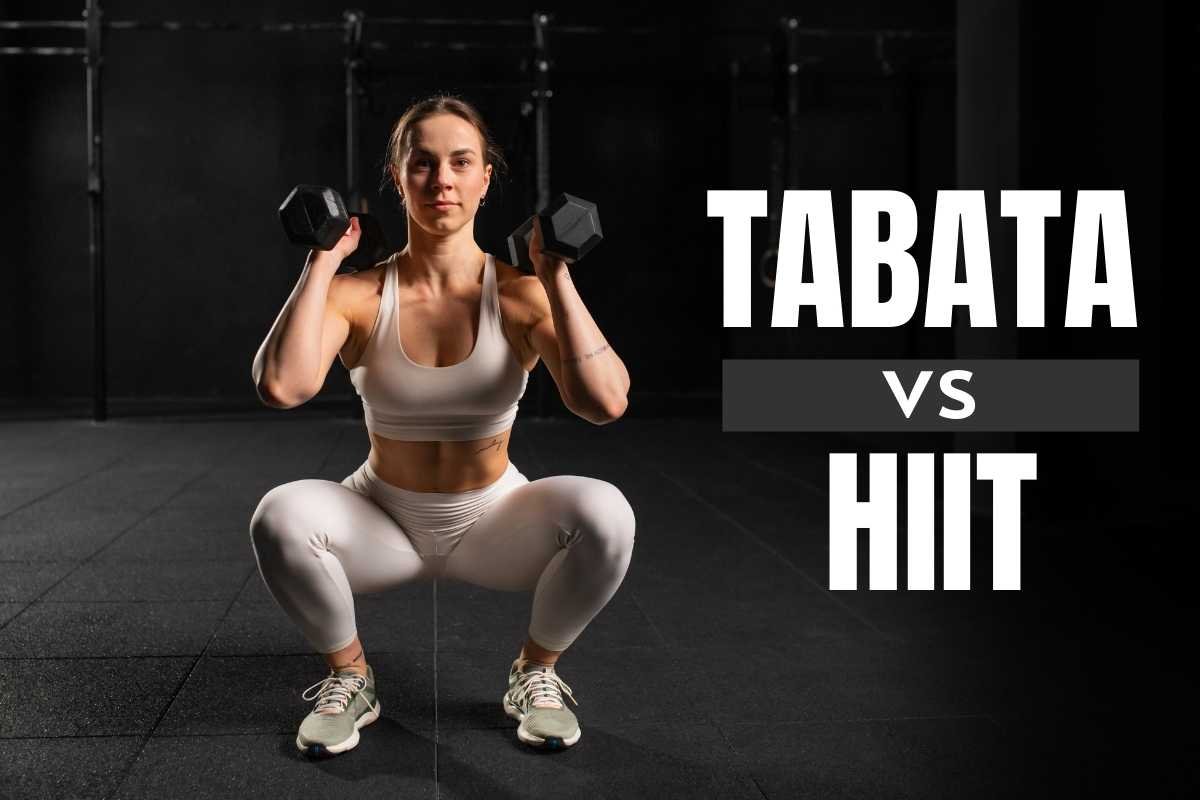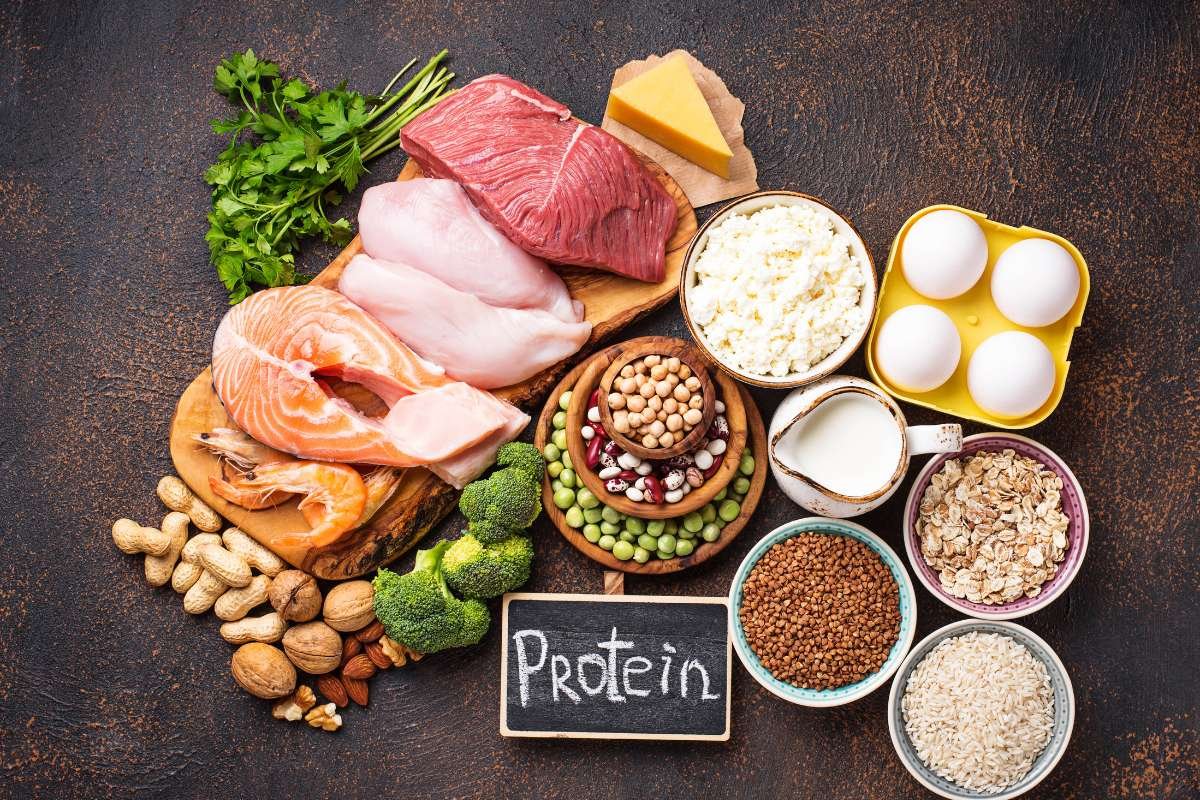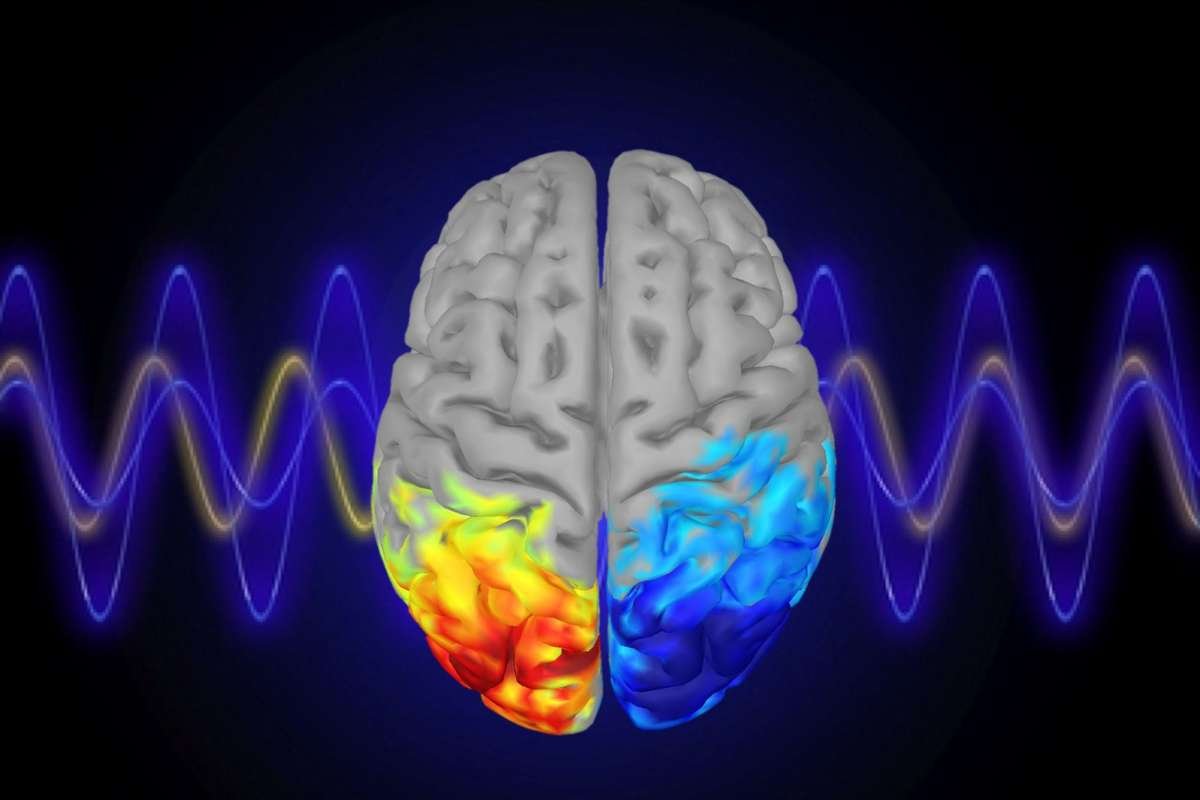In a time when every minute counts and is valuable. The popularity of science-backed quick workouts is growing with time. As we continue into 2025. High-intensity training methods are becoming even more dominant in fitness and sport. With many promoting quick, effective fitness opportunities. Tabata and HIIT, or high-intensity interval training, lead the way. However, when it comes to the myths and benefits, they are often used similarly. This creates confusion regarding the differences and advantages of each. And when to effectively use Tabata vs HIIT.
This article will break through some of the noise. To help you recognize the primary differences between Tabata and HIIT. We will identify the different protocols. With physiological responses, and the right situations for each protocol. So you can make smart decisions about your training. By the end of this, you will understand why it matters and why the “Tabata vs HIIT” debate isn’t just theoretical. But practical to help you maximize your fitness.
What is HIIT? The Science behind High-Intensity Interval Training:
High-Intensity Interval Training (HIIT) involves alternating periods of near-maximal effort and recovery. With recovery being either rest or low-intensity movement. HIIT is very versatile. It can be performed as running, cycling, bodyweight circuits, or weightlifting.
Typical HIIT work/rest structures include:
- 30:30: 30 seconds hard work, 30 seconds rest
- 40:20: 40 seconds hard work, 20 seconds rest
- 2:1 ratios (for advanced athletes): example, 1 minute work, 30 seconds rest
- Workouts usually last 10–30 minutes, with 2–4 sessions per week recommended for most people.
Proven Benefits of HIIT (Science-backed)
Numerous scientific studies support HIIT’s effectiveness. For a range of health and fitness goals.
- Fat Burning: HIIT stimulates fat loss. By keeping the metabolism elevated even after the workout ends. This happens through the EPOC/afterburn effect.
- VO₂ Max Improvements: HIIT is highly effective at increasing VO₂ max. Such as cardiorespiratory endurance. Studies show significant gains in both healthy adults and individuals. Along with stable heart conditions. HIIT intervals typically challenge 85–100% of maximum aerobic capacity.
- Metabolic Health: HIIT improves insulin sensitivity and blood sugar control. It is also beneficial for people with type 2 diabetes, heart failure, and stable angina. When performed under medical supervision.
- Muscle Retention & Overall Fitness: HIIT helps maintain muscle mass during weight loss. Also improves strength and endurance in less time than traditional workouts.
What is Tabata? The 4-Minute Protocol:
Tabata is a high-intensity interval training (HIIT) protocol. It was developed by Japanese scientist Dr. Izumi Tabata in 1996. Working with Japan’s Olympic speed skating team, Dr. Tabata conducted a study. It compares traditional steady-state cardio to a new 4-minute, high-intensity interval structure. His research concluded that short bursts of maximum effort. That is in a very specific 20-second on, 10-second off pattern. This could deliver superior gains in both aerobic and anaerobic fitness. When compared to longer, moderate workouts.
Tabata Structure: The 4-Minute Power Protocol
- 20 seconds of maximum intensity exercise
- 10 seconds rest
- Repeat for 8 rounds (4 minutes total)
This structure is strictly followed for one Tabata “set.” This may involve one exercise or a rotation.
Benefits of Tabata (Backed by the Original Study)
- Improved Endurance: Dr. Tabata’s study showed a 15% increase in VO2 max after six weeks. This is a key cardiovascular measure.
- Enhanced Anaerobic Capacity: The Tabata group saw a 28% improvement. But traditional cardio had no significant effect here.
- Fat Oxidation & Efficiency: The intense intervals spike metabolism. This leads to greater post-workout calorie burn. Which is excess post-exercise oxygen consumption, or EPOC. And boost both endurance and fat loss even with minimal time investment.
- Time-Efficient: Delivers near-maximal gains in only 4 minutes per session.
Let’s understand the major difference between Tabata vs HIIT. And the elements of these training methods in a more brief way.
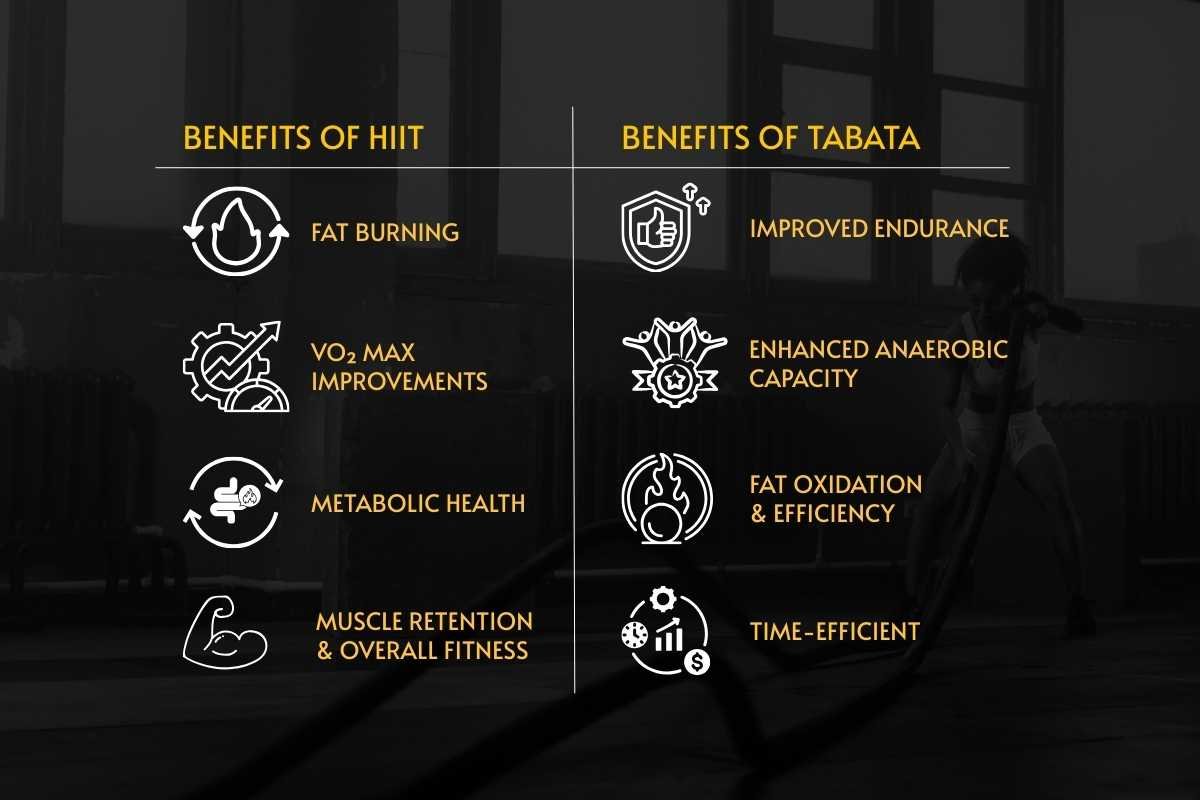
Tabata vs HIIT: Key Differences Explained
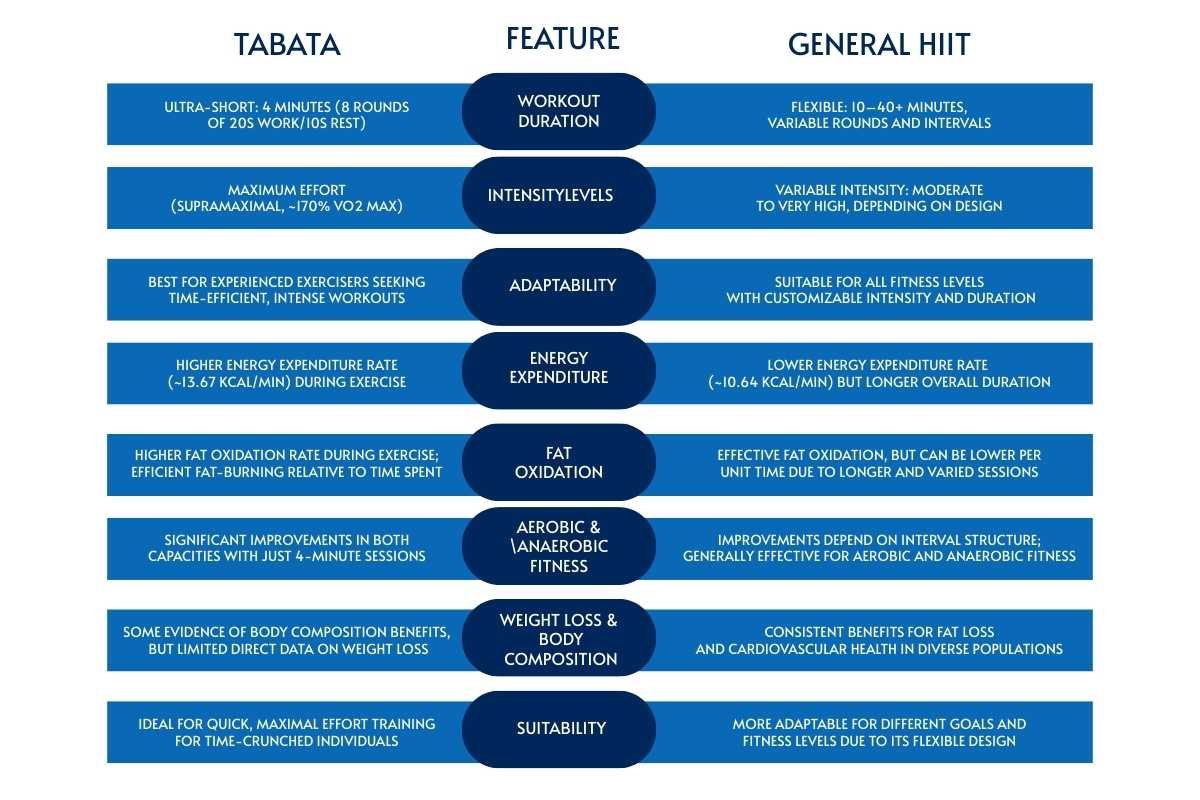
| Tabata | Feature | General HIIT |
| Ultra-short: 4 minutes (8 rounds of 20s work/10s rest) | Workout Duration | Flexible: 10–40+ minutes, variable rounds and intervals |
| Maximum effort (supramaximal, ~170% VO2 max) | Intensity Levels | Variable intensity: moderate to very high, depending on design |
| Best for experienced exercisers seeking time-efficient, intense workouts | Adaptability | Suitable for all fitness levels with customizable intensity and duration |
| Higher energy expenditure rate (~13.67 kcal/min) during exercise | Energy Expenditure | Lower energy expenditure rate (~10.64 kcal/min) but longer overall duration |
| Higher fat oxidation rate during exercise; efficient fat-burning relative to time spent | Fat Oxidation | Effective fat oxidation, but can be lower per unit time due to longer and varied sessions |
| Significant improvements in both capacities with just 4-minute sessions | Aerobic & Anaerobic Fitness | Improvements depend on interval structure; generally effective for aerobic and anaerobic fitness |
| Some evidence of body composition benefits, but limited direct data on weight loss | Weight Loss & Body Composition | Consistent benefits for fat loss and cardiovascular health in diverse populations |
| Ideal for quick, maximal effort training for time-crunched individuals | Suitability | More adaptable for different goals and fitness levels due to its flexible design |
Also Read:
- Why 10-Minute HIIT Workouts Are Better Than an Hour at the Gym?
- Is This the Fastest Way to Burn Fat? Try the Tabata Workouts for Beginners
- How to Add Variety to Your HIIT Workouts?
Which One is Better for You? Breaking it Down by Goals:
Tabata is HIIT. But not all HIIT is Tabata. Basically, Tabata is a higher-intensity version of HIIT. With shorter and more rigidly defined workouts. HIIT routines offer you a bit more flexibility. Let’s help you choose among these training methods that suit you well.
Tabata is best suited for:
- Experienced exercisers: Its intensity demands working at maximum effort. This may be challenging for beginners.
- Time-crunched individuals: Tabata provides significant aerobic and anaerobic improvements in just 4 minutes. Making it perfect for those with busy schedules.
- Goal: Rapid fitness gains. Those seeking the quickest boost in cardiovascular and fat-burning benefits within minimal time.
HIIT is more suitable for:
- All fitness levels: HIIT routines can be easily adapted for beginners. With intermediates or advanced athletes. By modifying the interval length and intensity.
- Goal: Flexibility or endurance. If your aim is longer workouts, gradual adaptation, or varied fitness objectives. Like endurance, fat loss, or muscle building. HIIT offers more customization.
- Those seeking variation: HIIT accommodates different exercises, intervals, and rest times. This helps keep workouts fresh and engaging.
Experts’ Insights about Tabata vs HIIT:

1. Ashley Borden (Celebrity trainer. She was featured on E!’s “Revenge Body With Khloe Kardashian” and “The Kelly Clarkson Show”) on Tabata:
Despite the minimal time requirement. Tabata is more than a trend. It is a scientifically grounded exercise method. It provides a highly effective way to burn fat. People feel it’s more achievable than trying to sustain effort for 5 minutes followed by a minute of rest. They often say, ‘I can manage 20 seconds.’ That’s a significant appeal for those who might find other HIIT formats intimidating. If fat burning is your objective. Incorporating Tabata into your workouts adds significant value to your health. And helps in time management.
2. Angela Gargano (certified trainer & American Ninja Warrior contestant), on HIIT and Tabata:
“It’s quick, easy, and effective. And pretty much anyone can benefit from it, no matter your age or fitness level… Whether you’re taking on an EMOM, AMRAP, or Tabata. We’ll explain later, there’s a HIIT approach for everyone. That will have you saying, ‘It’s over already?’ Remember, you can do almost anything for one minute! If you’re looking to emphasize the first I in HIIT (intensity!), consider Tabata.”
Sample Workout to Try Today:
Unlock a new level of fitness with these sample Tabata and HIIT workouts. These are designed to deliver maximum results in minimal time. Get ready to challenge your limits and boost your metabolism with these high-intensity training protocols:
1. 4-Minute Fat Burning Workout | Tabata for Beginners:
2. 4 Minute- HIIT Tabata Workout (w/ Ash Crawford):
3. 12 MIN TABATA HIIT WORKOUT (Intermediate) Full Body Home Workout, No Equipment
Also Read:
- Easy HIIT Workouts At Home for Beginners That Boost Energy
- 10 Yoga Poses to Pair with Your HIIT Workouts
- 20-Minute HIIT Workouts That Change Your Body
Conclusion
In the busy world of 2025. Where every minute is precious. Science-backed quick workouts like HIIT and its intense cousin, Tabata, are invaluable. This article has aimed to cut through the confusion. And clearly defining their distinct protocols, physiological impacts, and ideal applications. By understanding whether Tabata’s ultra-short, maximal bursts. Or HIIT’s flexible, longer intervals align better with your fitness level and goals. You’re empowered to make informed training decisions. The “Tabata vs HIIT” debate is not just academic. It is a practical guide to maximizing your fitness journey. And also optimizing your precious time.
FAQ:
1. Is Tabata the same as HIIT?
No. Tabata is a specific type of HIIT, created by Dr. Izumi Tabata in Japan in 1996. It follows a strict format of 20 seconds of all-out effort. Followed by 10 seconds of rest, repeated 8 times (4 minutes total). HIIT is a broader category of interval training with flexible timing and intensity.
2. Which builds endurance better: Tabata or HIIT?
Studies show both improve endurance. But Tabata’s extreme intensity improves VO₂ max faster in trained athletes. While traditional HIIT may be more practical for gradual endurance building.
3. Can Tabata replace longer cardio sessions?
For busy people, yes. Research shows Tabata can deliver similar benefits to longer steady-state cardio. Within a fraction of the time. However, endurance athletes may still need longer sessions for sport-specific conditioning.
References:
- https://www.healthline.com/nutrition/benefits-of-hiit#muscle-gain
- https://www.myprotein.co.in/blog/training/what-is-tabata-training
- https://pmc.ncbi.nlm.nih.gov/articles/PMC10927983
- https://health.clevelandclinic.org/tabata-vs-hiit-whats-the-difference
- https://www.womenshealthmag.com/fitness/g30985585/hiit-workout-at-home

